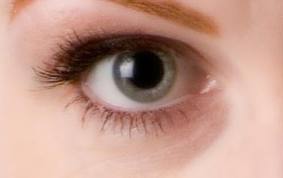

To extend this background, we needed further confirmation of the change in pupil size with discomfort.Ī reaction to glare causing discomfort is a flinch response in the muscles surrounding the eye (i.e., squinting), and the intensity of the electrical activity in these muscles, the electromyography (EMG), can be measured easily. They found that pupil diameter reduced as glare become more unbearable (correlation coefficient for bivariate analysis = −0.429, P = 0.037): the smaller the pupil size, the higher the discomfort rating, which is somewhat paradoxical as less light is reaching the retina. 17 examined discomfort glare under a limited range of conditions (two background luminances and one glare luminance), with discomfort evaluated using a 10-point scale (ranging from not noticeable glare to unbearable glare) and monitored pupil diameter using infra-red photography. Using a more precise methodology, Stringham et al. However, this may be due to stimulus range bias 15 or to errors in the method of pupil size measurement rather than lack of relationship between discomfort glare and pupil size. Hopkinson 16 reported that pupil diameter varied “hardly at all,” despite the variation in discomfort from just perceptible to definitely intolerable. Following 5 minutes of adaptation, the glare luminance was increased to find the points at which glare was considered just acceptable, just uncomfortable, just intolerable, and definitely intolerable. In that experiment using a constant background luminance, the glare luminance was slowly increased to the point at which it was considered just perceptible, at which point pupil size was determined using flash photography. Hopkinson 16 concluded there was no relationship between pupil diameter and the degree of discomfort from glare. In two studies, pupil diameter was investigated alongside ratings of discomfort.

It also offers an explanation as to why long-term exposure to discomfort glare leads to visual fatigue and eyestrain. The correlation between discomfort glare and physiological responses suggests an objective way to characterize and evaluate discomfort glare that may overcome the problems of conventional subjective evaluation. The two physiological responses studied here to characterize discomfort glare under various lighting conditions had significant correlation with the subjective evaluation. Larger variations of eye movement were found among seniors. Severe glare discomfort increased the speed of eye movement and caused larger pupil constriction. Subjective evaluation of glare discomfort was highly correlated with eye movement (multiple correlation coefficient of >0.94, P < 0.001) and pupil constriction ( R 2 = 0.38, P < 0.001). Ten young (mean age: 24.5 years old) and 10 senior (mean age: 61 years old) participants were recruited for this experiment. Eye movement was recorded using an electro-oculogram (EOG), and pupil size was recorded using Tobii glasses. Participants evaluated glare discomfort using the standard de Boer rating scale under various conditions manipulated to influence glare discomfort.

This study examined eye movement and pupil size responses to glare discomfort using new approaches to analysis: relative pupil size and speed of eye movement. These include wearing a helmet and seatbelt when appropriate and removing trip hazards from your home and yard.Involuntary physiological responses offer an alternative means to psychophysical procedures for objectively evaluating discomfort glare. However, you can follow safety steps to prevent head injury, a common cause of anisocoria. Some cases of anisocoria cannot be prevented. Medications that may cause uneven pupils include glaucoma eye drops and certain types of anxiety medications and antidepressants. This type develops as a side effect of medications. This could be from optical surgery complications, injury or angle-closure glaucoma. This type develops after trauma to the eye that damages the iris. This type is caused by an underlying disease or condition, including Horner’s syndrome, Adie’s tonic pupil and third nerve palsy.

Most cases are benign and do not affect the pupils’ response to light. This is the most common type of anisocoria. However, having a large difference in pupil sizes that does not return to normal may indicate a serious health problem. Pupils fluctuate in size temporarily throughout the day, and there is usually nothing to worry about if they return to normal and additional symptoms aren’t present. A diameter difference of less than 0.5 millimeters is not uncommon. Many healthy people have different-sized pupils. Anisocoria is a condition characterized unequal pupil sizes.


 0 kommentar(er)
0 kommentar(er)
